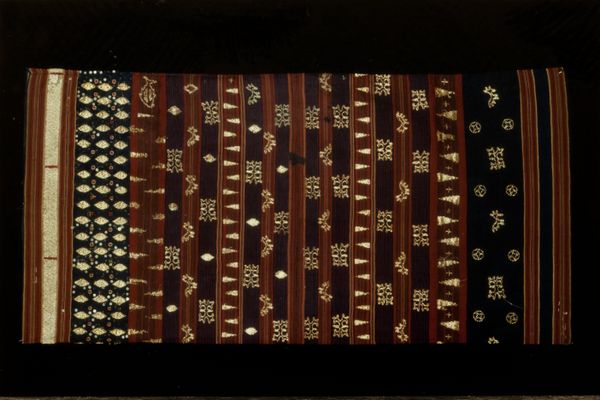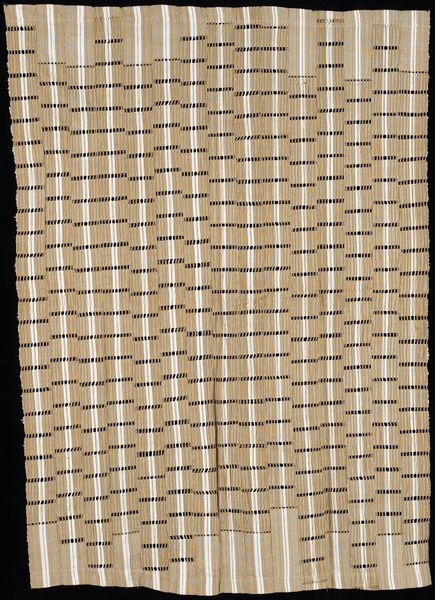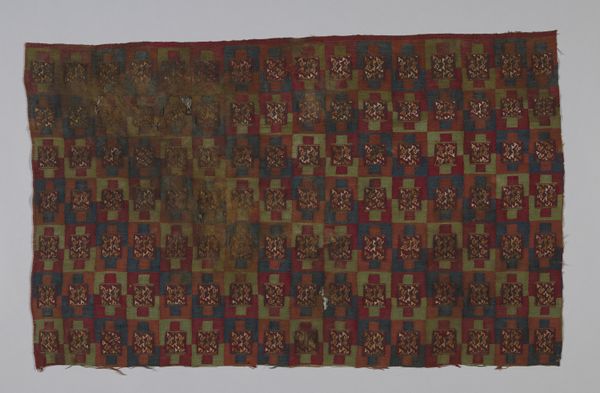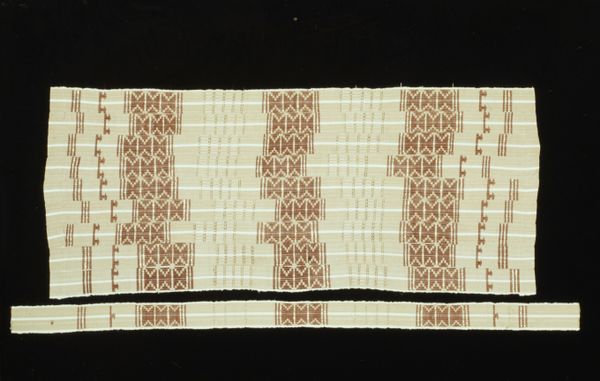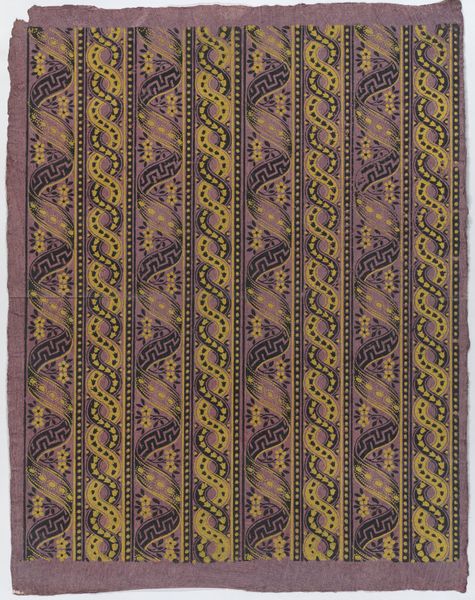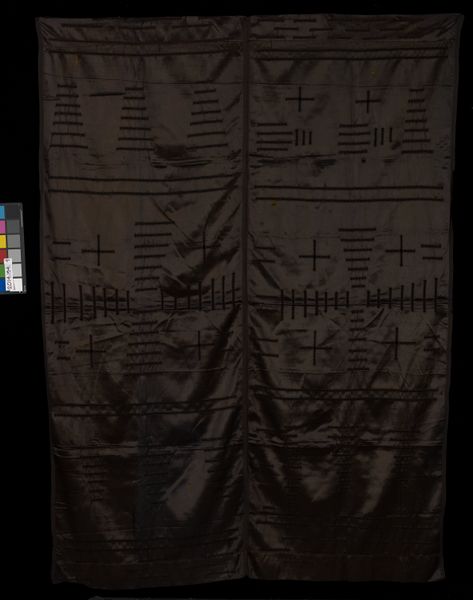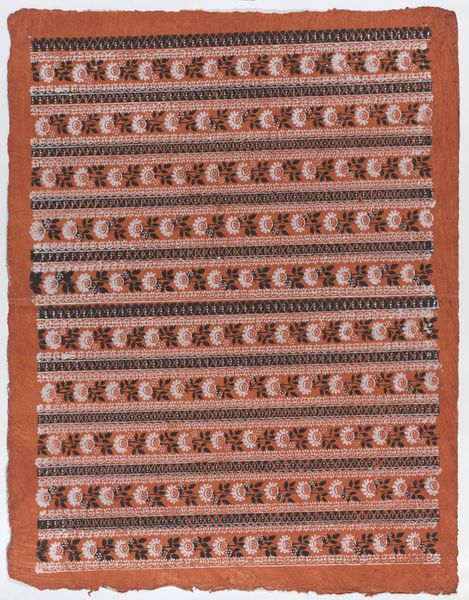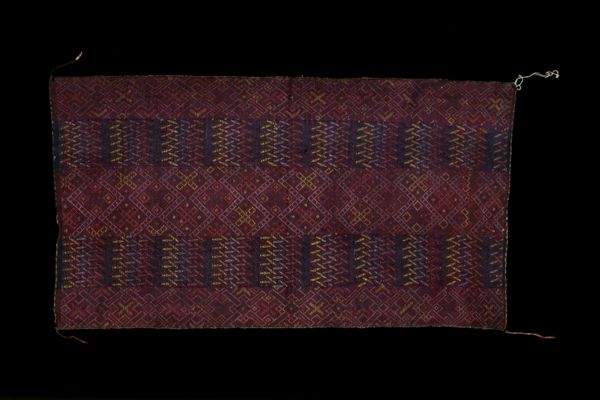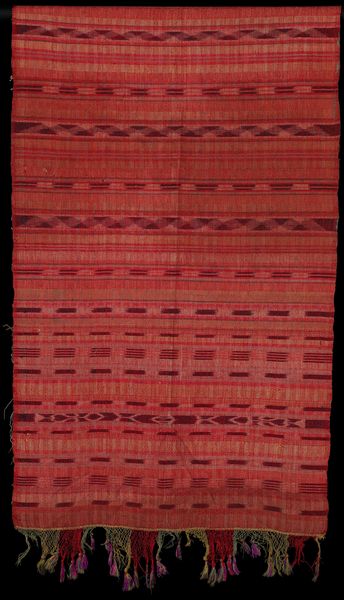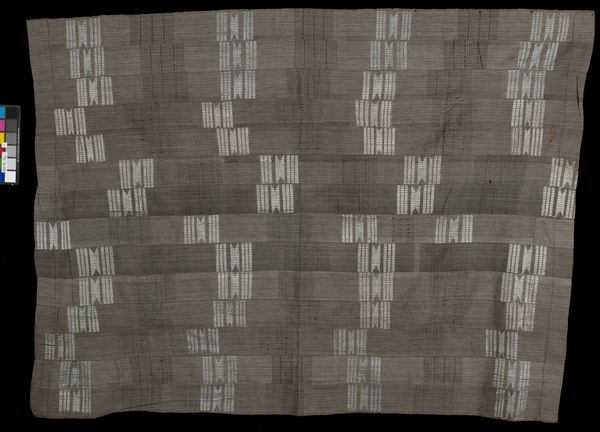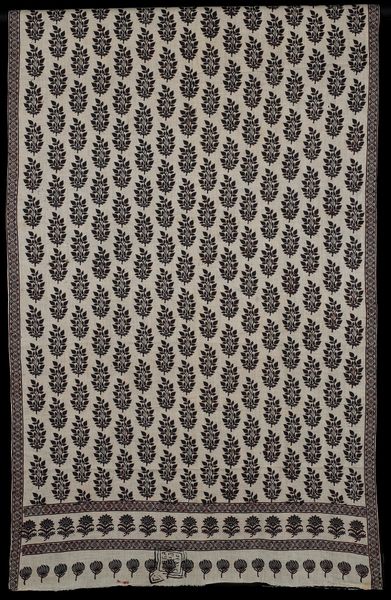
fibre-art, weaving, textile, cotton
#
fibre-art
#
asian-art
#
weaving
#
textile
#
geometric pattern
#
geometric
#
cotton
Dimensions: 49 3/16 x 34 3/4 in. (124.94 x 88.27 cm)
Copyright: Public Domain
Editor: We're looking at a Sarong from around the 20th century, created by the Manggarai people. It's fibre art made of cotton and weaving. It feels both intricate and restrained. What significance might this textile hold? Curator: This sarong, viewed through a critical lens, isn't just a beautiful object; it's a powerful articulation of Manggarai identity and resilience. Textiles in many cultures act as potent carriers of social meaning. Think about the labor involved in its creation – traditionally, weaving is women's work. What does that tell us? Editor: So, it's about gender roles and perhaps a woman's expression within her society? Curator: Exactly! And we can also consider it within the broader context of colonialism and trade. Textiles like this were often traded, becoming part of global exchange networks. How might this interaction have affected traditional Manggarai weaving practices? Was there resistance, adaptation, or perhaps even subversion embedded within these designs? Editor: I see! The act of creating and wearing this sarong becomes a statement. The geometric patterns are subtle, yet they could represent a form of cultural defiance or perseverance, right? Curator: Precisely. Each thread woven holds layers of meaning – identity, resistance, and the ongoing negotiation between tradition and modernity. What do you make of the relatively dark colour palette given the vibrant colours used in textiles from other parts of Asia? Editor: That’s a good question, maybe the somber shades symbolize hardship or connect the wearers to the earth and ancestors. I had not considered textiles this way before, thinking about all of the societal connections! Curator: It reveals the profound ways in which even everyday objects can speak volumes about power, identity, and history, don’t you think?
Comments
No comments
Be the first to comment and join the conversation on the ultimate creative platform.
